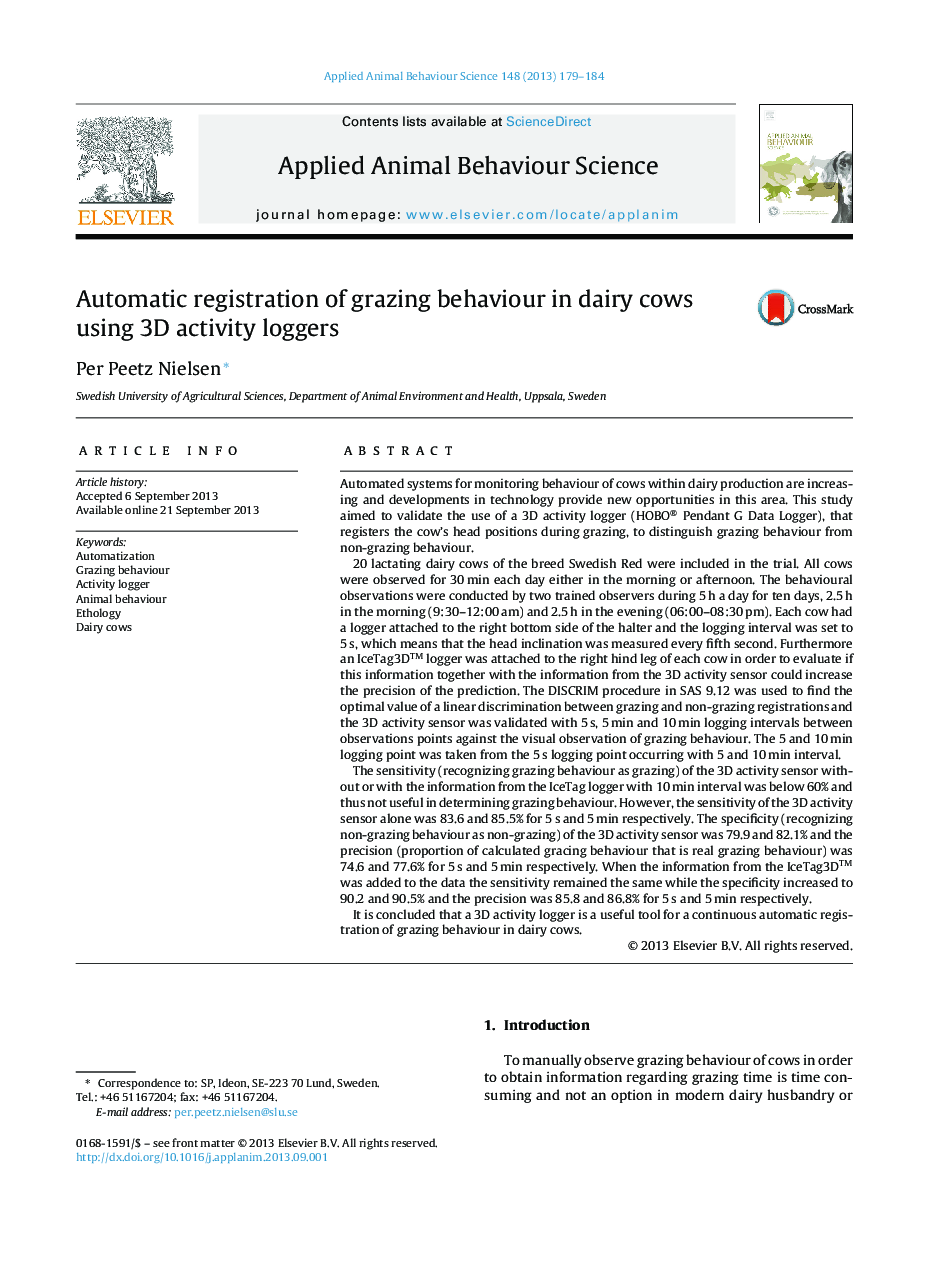| کد مقاله | کد نشریه | سال انتشار | مقاله انگلیسی | نسخه تمام متن |
|---|---|---|---|---|
| 4522647 | 1625358 | 2013 | 6 صفحه PDF | دانلود رایگان |

Automated systems for monitoring behaviour of cows within dairy production are increasing and developments in technology provide new opportunities in this area. This study aimed to validate the use of a 3D activity logger (HOBO® Pendant G Data Logger), that registers the cow's head positions during grazing, to distinguish grazing behaviour from non-grazing behaviour.20 lactating dairy cows of the breed Swedish Red were included in the trial. All cows were observed for 30 min each day either in the morning or afternoon. The behavioural observations were conducted by two trained observers during 5 h a day for ten days, 2.5 h in the morning (9:30–12:00 am) and 2.5 h in the evening (06:00–08:30 pm). Each cow had a logger attached to the right bottom side of the halter and the logging interval was set to 5 s, which means that the head inclination was measured every fifth second. Furthermore an IceTag3D™ logger was attached to the right hind leg of each cow in order to evaluate if this information together with the information from the 3D activity sensor could increase the precision of the prediction. The DISCRIM procedure in SAS 9.12 was used to find the optimal value of a linear discrimination between grazing and non-grazing registrations and the 3D activity sensor was validated with 5 s, 5 min and 10 min logging intervals between observations points against the visual observation of grazing behaviour. The 5 and 10 min logging point was taken from the 5 s logging point occurring with 5 and 10 min interval.The sensitivity (recognizing grazing behaviour as grazing) of the 3D activity sensor without or with the information from the IceTag logger with 10 min interval was below 60% and thus not useful in determining grazing behaviour. However, the sensitivity of the 3D activity sensor alone was 83.6 and 85.5% for 5 s and 5 min respectively. The specificity (recognizing non-grazing behaviour as non-grazing) of the 3D activity sensor was 79.9 and 82.1% and the precision (proportion of calculated gracing behaviour that is real grazing behaviour) was 74.6 and 77.6% for 5 s and 5 min respectively. When the information from the IceTag3D™ was added to the data the sensitivity remained the same while the specificity increased to 90.2 and 90.5% and the precision was 85.8 and 86.8% for 5 s and 5 min respectively.It is concluded that a 3D activity logger is a useful tool for a continuous automatic registration of grazing behaviour in dairy cows.
Journal: Applied Animal Behaviour Science - Volume 148, Issues 3–4, October 2013, Pages 179–184